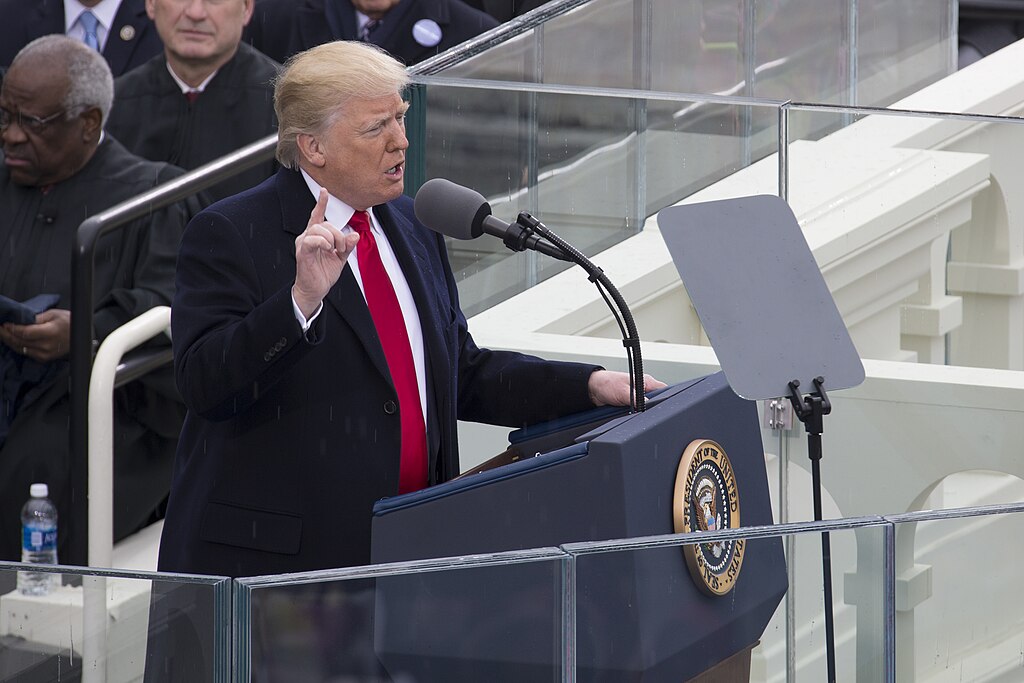President Donald Trump’s aggressive trade policies continue to spark debates as U.S. farmers report mounting financial challenges in 2025. Tariff battles, fluctuating commodity prices, and new export restrictions are creating significant uncertainty for an agricultural sector heavily reliant on international markets.
Falling Prices and Rising Costs
Farmers nationwide are grappling with declining crop prices attributed to ongoing trade disputes. China, a key buyer of U.S. agricultural goods, has reduced imports of soybeans, corn, and pork in retaliation to new tariffs imposed on Chinese technology and machinery exports.
According to the U.S. Department of Agriculture (USDA), soybean prices have dropped by 18% since January, hovering near $10 per bushel, a stark contrast to pre-tariff levels. For many farmers, this means selling their harvest at a loss.
"Many of us are at a breaking point," said Doug Kramer, a soybean farmer in Iowa. "We’re planting the same fields, working the same hours, but the income just isn’t there anymore."
Meanwhile, production costs continue to climb. Increased tariffs on machinery parts and fertilizers have added to farmers' expenses, further squeezing profit margins. The National Corn Growers Association estimates that the average farmer has seen a 15% rise in operational costs over the past year.
Export Barriers Compound Problems
While Trump’s policies aim to prioritize domestic production and reduce reliance on foreign imports, many farmers rely on international buyers to sustain their operations. China's reduction in U.S. soybean imports, for example, has left many farmers struggling to find alternative markets.
Additionally, Mexico, another major importer of U.S. corn and beef, has imposed counter-tariffs on American agricultural products in response to Trump’s broader trade measures. This has complicated an already precarious situation for farmers trying to diversify export destinations.
The Trump administration has defended its policies, asserting they are necessary to level the playing field and bring back manufacturing jobs. However, critics argue that the agricultural sector has become an unintended casualty in the escalating trade wars.
"The president says these policies are about strengthening America, but it feels like we’re being left behind," said Kramer.
Government Aid Sparks Mixed Reactions
In response to mounting pressure, the federal government has expanded its financial aid programs for farmers. The USDA announced a $15 billion relief package to help offset losses from tariffs, but many in the industry argue it’s not a long-term solution.
"The aid helps, but it doesn’t fix the market disruptions," said Sarah Hayes, a dairy farmer in Wisconsin. "We don’t want handouts—we want fair trade policies."
Netizens React to Farmers’ Plight
On social media, reactions to the ongoing crisis have been polarized:
- @FarmTruth2025: "Farmers are the backbone of this country, and these policies are destroying their livelihoods."
- @ProTradeWins: "Trump’s trade wars were needed. Farmers should adapt to these new realities like everyone else."
- @MidwestAngler: "It’s heartbreaking to see my community suffering while Washington plays politics."
- @PolicyWatchdog: "Aid packages are a band-aid. Farmers need stable markets, not government checks."
- @TradeReformNow: "Tariffs are hurting the wrong people. How much more damage before changes are made?"
- @AgriBizReports: "Farmers deserve better. These policies are short-sighted and harmful to rural America."



 Trump and Lula Discuss Trade, Sanctions, and Security in “Productive” Phone Call
Trump and Lula Discuss Trade, Sanctions, and Security in “Productive” Phone Call  Trump Claims He Will Void Biden Documents Signed with Autopen
Trump Claims He Will Void Biden Documents Signed with Autopen  Oil Prices Slip as Russia-Ukraine Peace Hopes Fade and Oversupply Fears Grow
Oil Prices Slip as Russia-Ukraine Peace Hopes Fade and Oversupply Fears Grow  Japan’s Finance Minister Signals Alignment With BOJ as Rate Hike Speculation Grows
Japan’s Finance Minister Signals Alignment With BOJ as Rate Hike Speculation Grows  Trump’s Name Appears on U.S. Institute of Peace Ahead of Rwanda–Congo Deal Signing
Trump’s Name Appears on U.S. Institute of Peace Ahead of Rwanda–Congo Deal Signing  China Urged to Prioritize Economy Over Territorial Ambitions, Says Taiwan’s President Lai
China Urged to Prioritize Economy Over Territorial Ambitions, Says Taiwan’s President Lai  Putin Concludes High-Level Talks With Trump Envoy on Ending Ukraine Conflict
Putin Concludes High-Level Talks With Trump Envoy on Ending Ukraine Conflict  South Korea Posts Stronger-Than-Expected 1.3% Economic Growth in Q3
South Korea Posts Stronger-Than-Expected 1.3% Economic Growth in Q3  UN General Assembly Demands Russia Return Ukrainian Children Amid Ongoing Conflict
UN General Assembly Demands Russia Return Ukrainian Children Amid Ongoing Conflict  Asian Currencies Steady as Rupee Hits Record Low Amid Fed Rate Cut Bets
Asian Currencies Steady as Rupee Hits Record Low Amid Fed Rate Cut Bets  Trump Administration Tightens H-1B Visa Vetting With New Focus on Free Speech and Censorship
Trump Administration Tightens H-1B Visa Vetting With New Focus on Free Speech and Censorship  Pentagon Probe Finds Hegseth’s Use of Signal Risked Exposing Sensitive Yemen Strike Details
Pentagon Probe Finds Hegseth’s Use of Signal Risked Exposing Sensitive Yemen Strike Details  Michael Dell Pledges $6.25 Billion to Boost Children’s Investment Accounts Under Trump Initiative
Michael Dell Pledges $6.25 Billion to Boost Children’s Investment Accounts Under Trump Initiative  Asian Markets Stabilize as Wall Street Rebounds and Rate Concerns Ease
Asian Markets Stabilize as Wall Street Rebounds and Rate Concerns Ease  BOJ Governor Ueda Highlights Uncertainty Over Future Interest Rate Hikes
BOJ Governor Ueda Highlights Uncertainty Over Future Interest Rate Hikes  Asian Markets Mixed as Fed Rate Cut Bets Grow and Japan’s Nikkei Leads Gains
Asian Markets Mixed as Fed Rate Cut Bets Grow and Japan’s Nikkei Leads Gains  U.S. Repatriation Flight Carrying 266 Venezuelan Migrants Lands in Caracas
U.S. Repatriation Flight Carrying 266 Venezuelan Migrants Lands in Caracas 




























